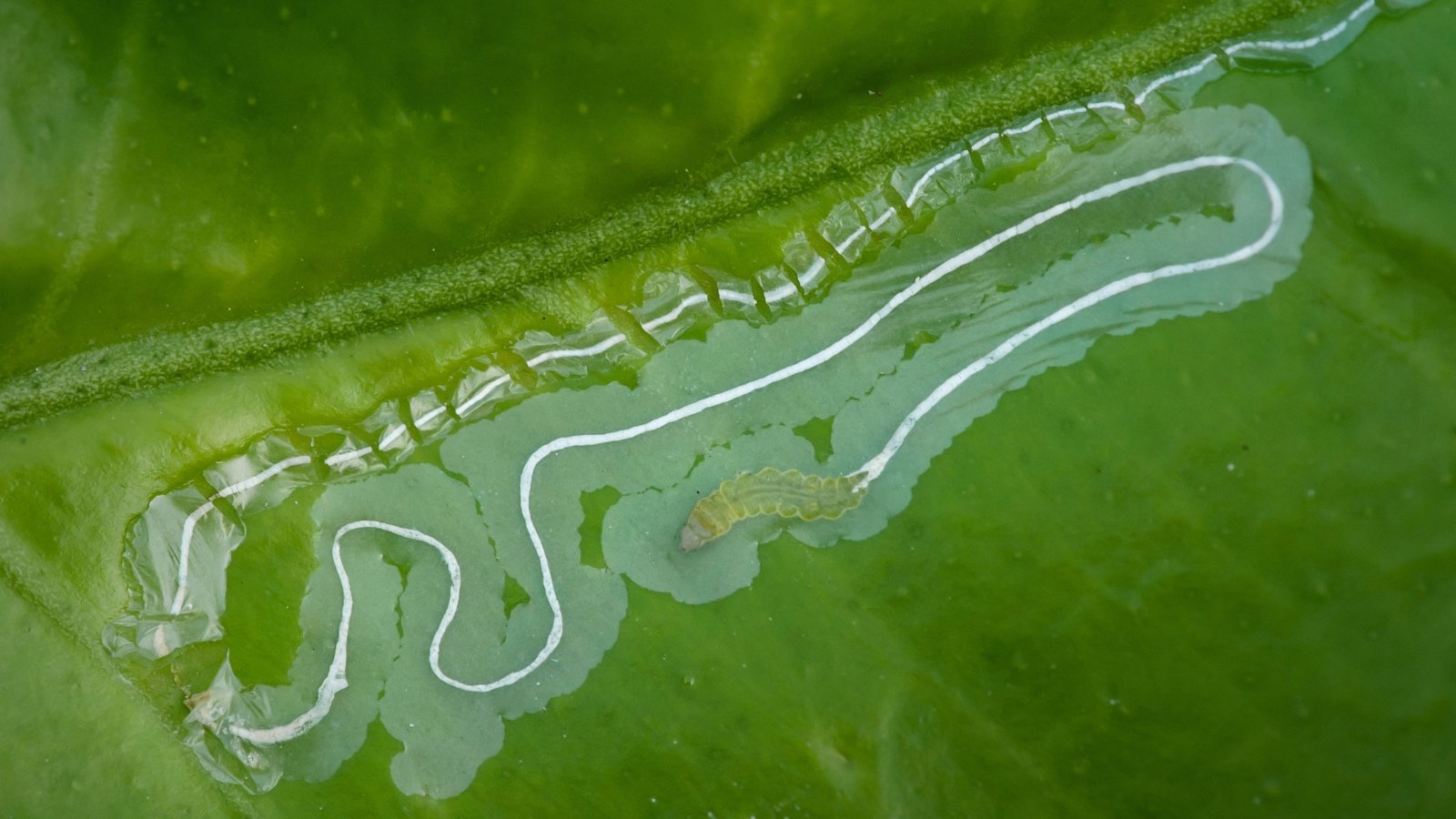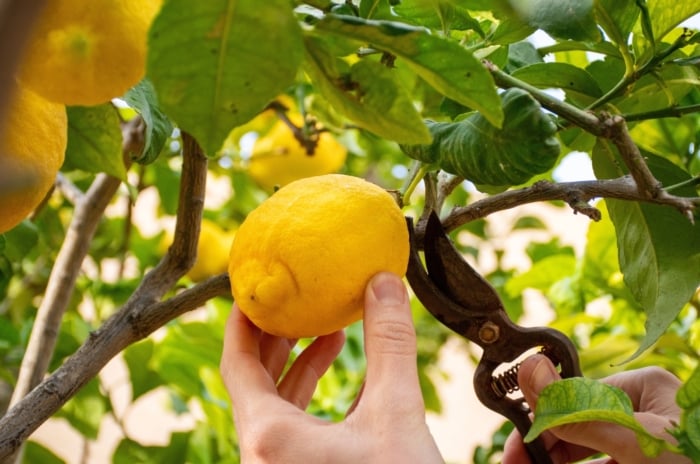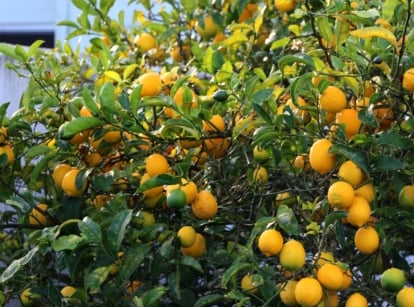9 Citrus Tree Pests to Watch For This Season
Citrus trees offer delicious fruit, bright winter foliage, and perfume-like aromatic flowers. As fun as they are to grow, they have a few pesky predators to look out for. In this article, gardening expert Matt Dursum covers the most common citrus tree pests that could harm your citrus trees this season.

Contents
Citrus trees are some of the most planted fruit trees in warmer regions of the world. Their intense winter foliage and flavorful fruit give gardeners plenty to look forward to each winter.
These fruits are among the world’s most important crops, with over 146 million tons produced annually. The thousands of species and cultivars we enjoy today come from just three Asian ancestors: pomelos, mandarins, and citrons.
Unfortunately for gardeners, as these productive trees evolved, so did their pests and the diseases they carry. Below are the 9 citrus tree pests to watch for this season and the best ways to treat them.
Felco 322 Long Reach Harvesting Snips

With its 7.48 inches (19 cm) chromium blades, the FELCO 322 picking and trimming snips have the longest reach in our range. They offer maximum comfort during cutting thanks to polyurethane shock absorbers, while their flexible pin spring also helps reduce muscle tension.
Asian Citrus Psyllid

Asian citrus psyllids are sap-sucking insects that are some of the most common and damaging citrus tree pests. They cause a lethal disease called citrus greening or Huanglongbing (HLB). They live on the lower side of the leaves and are active during the plant’s growth period.
The insects carry the harmful bacterium Candidatus Liberibacter asiaticus. When the bacteria infects the trees, it causes parts of the leaves to turn yellow. If it’s not treated immediately, it will kill your tree in a few years.
This small psyllid shows up in gardens and infects many species of the family Rutaceae, including lemon, orange, pomelo, and lime. Psyllids resemble 3-4 mm long cicadas, with a dusty wax coating on their wings.
How to Identify
Psyllids live on the lower sections of the leaves. Adults are 3-4 mm long and brown with a dusty wax coating. They leave white, waxy droppings on the leaves. Nymphs are orange or yellow with red eyes. Eggs are pale yellow, almond-shaped, and 0.3 millimeters long.
How to Prevent
Stay on a good pruning and fertilizing schedule. When your trees are growing, look carefully with a magnifying glass at the tips and lower corners of the new leaves and twigs. Look for any white, waxy tube-like substances on the leaves.
How to Remove
If you identify psyllids on your tree, spray fresh growth with insecticidal soaps, horticultural oils, and pyrethrins every 7-10 days. Call your local agricultural commissioner to inspect your trees for HLB. Symptoms show up long after the insects invade and can’t be treated, so early identification is key.
Asiatic Citrus Canker

Asiatic citrus canker is another common bacteria that affects the leaf and plant tissue. Once infected, it spreads and inoculates healthy tissue. After around nine days, the bacteria form tan or yellow lesions that damage the leaves, twigs, and branches.
Different strains of the bacteria affect different species. The CC-B strain targets Mexican limes, and pomelos, sour oranges while CC-A affects grapefruit and some sweet oranges. Mandarins and lemons have the most resistance.
There is no cure for the disease, but copper fungicides are the most effective treatments. Always purchase your trees from a nursery certified in your state. Like always, sanitize your garden equipment. This is the best way to prevent any bacteria from reaching your trees.
How to Identify
Look for tan or yellow lesions that look like cankers on leaves, stems, and hardwood. The lesions are raised and form a brown center and yellow halo. When they erupt, they ooze out onto the plant.
How to Prevent
Don’t transport affected plant material and always disinfect your garden tools. Buy your trees from a certified nursery in your state only. Monitor your plants for symptoms.
How to Remove
If you think your trees are infected, call your local agricultural authorities immediately. They will run tests and help you control the disease.
Black Scale Coccidae

Coccidae are soft-scale insects common in many gardens and orchards around the world. Black scale are common in California’s orchards and fruit tree groves. Black scale insects infest the leaves and eventually move on to twigs and other woody parts of the plant.
Like other soft scale insects, black scale coccidae feed on tree sap. As they populate, they can introduce infections such as sooty mold, which infects the fruit. If left unchecked, these tiny pests can significantly decrease the health and productivity of your trees.
The best way to find these small critters is to inspect your trees with a magnifying glass. Prune them regularly with disinfected pruners or sheers. Keep to a consistent watering and fertilizing schedule and introduce natural predators to your garden.
How to Identify
If you see stunted growth in your trees, use a magnifying glass to look for the scale bugs. Black scale looks like tiny brown or black mites. They press against the surface of your plant, making them appear like a growth.
How to Prevent
Prune your trees regularly. Keep other disease spreading pests like ants away. Disinfect your garden tools after every use.
How to Remove
If all your preventative efforts failed, you can use organic insecticides. These include horticulture oils, plant oils, and neem oil. Thoroughly spray the areas infested with the black scale and reapply every 7 to 10 days. On smaller trees, pop the scales off the plant into soapy water with a cotton swab soaked in 70% or less rubbing alcohol.
Brown Citrus Aphid

Aphids are small soft-bodied insects that like to feed on crops and trees. These pear-shaped critters reproduce quickly and cause many problems, including stunting growth and spreading disease.
Brown citrus aphids are not picky pests, and target all citrus tree varieties. When large populations live in leaves and branches, they cause severe stunted growth. They can even be vectors for diseases such as the citrus tristeza virus.
These small aphids are brown and excrete a reddish-brown pigment if you crush them. The first signs of brown aphids are shriveling leaves and stunted growth. Soon, you may see large clusters on the woody areas of the tree and sooty mold on the leaves.
How to Identify
Brown citrus aphids are 1-3mm in length and brown. They form clusters on the plant and produce a reddish brown pigment when they’re crushed.
How to Prevent
Prevent these insects from ever entering your garden by pruning and keeping your soil healthy. Stick to a consistent watering schedule and do not over fertilize.
How to Remove
When you see them, don’t panic. Remove them by hand by pruning with disinfected pruners, or water sprays. The best long-term solution for your garden is introducing natural predators such as lady beetles and parasitic wasps. Plant an insectary to keep aphid numbers down.
California Red Scale

California red scales are scale insects that cause serious problems in West Coast orchards and home gardens. They came to California in the 19th century from Australian seedlings.
When red scales infect your tree, they defoliate the leaves and woody parts of the plant. They also consume the fruit skin and cause it to lose its shape and structure and eventually rot. If you leave them untreated, they will kill your tree over time.
These small-scale insects are around 1-2 mm in length. They look like tiny reddish-brown or gray circles. Male red scales will eventually enter a pupil stage under their shields and enter a winged adult phase.
How to Identify
Look for small reddish white or gray shields on leaves, fruit, stems, and branches. They are around 1-2 mm in length. Look for damage, stunted growth, and large clusters of the tell-tale shields.
How to Prevent
One of the best ways to prevent California red scale is keeping beneficial predators such as lady beetles in your garden. Prune your trees regularly and stick to a consistent maintenance schedule.
How to Remove
If the population is small, you can try removing them by hand. You can also soak a cotton swab in alcohol and run it through the infected parts of your tree. For larger outbreaks, you may have to apply organic insecticides and reapply every 7-10 days.
Citricola Scale

Citricola scales are common soft scale insect species that feed on leaves, twigs, and other aerial parts of your trees. They seldom affect the fruit, making them hard to notice. They survive off the plant’s sap and reproduce quickly.
These tiny insects will eventually destroy the leaves and twigs. Although they rarely infect fruit, you’ll notice an extreme reduction in fruit in infected trees. To make matters worse, they often introduce other diseases to your trees, such as sooty mold and honeydew.
Monitor your trees in summer for eggs and small reddish brown shields, and remove them by hand if you see only a few. If the infestation is more intense, wait until late summer, when the crawlers hatch from the eggs. At this stage, the nymphs lack their protective shields, and organic insecticides will be more effective.
How to Identify
Citricola scales can be up to 7 mm in length and have a dark gray oval shaped shield. Their eggs are yellow and oval. They feed on most citrus species, so monitor your plants closely.
How to Prevent
Stick to a strict pruning routine using only sterilized pruners or sheers. Keep beneficial insects such as lady beetles in your garden. Keep your garden and space around your orchard free from clutter.
How to Remove
If you only find a few insects, remove them by hand. If the population is larger, wait until late summer when the crawlers hatch from the eggs. Use an organic insecticide on the leaves and twigs and reapply every 7-10 days.
Citrus Leafminer

Citrus leafminers, Phyllocnistis citrella, are pesky insects that chew through leaves and leave your plants open to serious diseases. The larvae of this insect burrow into your leaves, creating easy-to-identify tunnels near the surface.
Although they leave ugly markings on your tree leaves, this leafminer’s moth larva don’t cause significant damage. They do, however, stunt the growth of young trees—and even worse—leave openings for serious bacteria and diseases.
Most often, you can handle a leaminer infestation by handpicking the infected leaves. If natural predators live in your garden, they’ll probably take care of the problem for you. If the infection is more serious, try using an organic spinosad or neem oil.
How to Identify
Look for white or hollow tunnels in the leaves. As the infestation gets worse, you’ll see more tunnels throughout the leaves.
How to Prevent
Encourage natural predators like wasps and lady beetles in your garden by planting flowering plants like dill, alyssum, yarrow, and others. Monitor your leaves for the leafminer’s telltale tunnels.
How to Remove
Simply pick off damaged leaves and monitor for improvements. If the infestation is severe, use organic insecticides on the infected areas of the plant.
Glassy-Winged Sharpshooter

Glassy-Winged Sharpshooters are leafhoppers that cause significant damage to California’s grapes. These pests also feed on citrus trees, boring holes in the leaves. The insects carry severe diseases that are more of a concern to other crops.
These small insects have brown to smoky charcoal colored wings and can grow between 12 to 14 mm long. On citrus trees, they are quite difficult to identify. When they move to other crops such as grapes, they can spread serious diseases, such as the Xylella fastidiosa bacterium.
The best preventative measure is having beneficial lady beetles, minute pirate bugs, and lacewings in your garden. If you see sharpshooters on your trees, try using an organic neem oil to get rid of them.
How to Identify
Look for smoky brown leafhoppers that are around ½ an inch (13mm) long. Their wings are somewhat transparent with thin red lines. They lay their eggs on the underside of leaves.
How to Prevent
The best way to prevent these pests from entering your orchard or garden is by keeping beneficial insects happy. Natural predators love these tasty leafhoppers and will get rid of them for you.
How to Remove
These leafhoppers are hard to remove and identify. If you notice the insects, find their eggs and use an organic insecticide to remove them. Follow up on all your plants and monitor them.
Sweet Orange Scab

Sweet orange scab is a common fungal disease that infects several species. It’s caused by the Elsinöe australis bacterium and can stunt tree growth and cause fallen fruit.
Look for lesions and scabs on the fruit. They can be pink or white and are slightly raised and rough. When they grow, the lesions turn gray, brown, or tan. On the leaves, you’ll notice lesions on the undersides, and eventually, the leaves will look stunted.
If you see symptoms of sweet orange scab immediately report it to your local agricultural authority. There is no cure, and the disease can severely impact industrial orchards and home gardens.
How to Identify
Look for lesions and scabs that resemble rough scales or dry skin. They can be pink to white at the early stages but change to gray, yellowish brown, tan, or brown as they grow.
How to Prevent
Never move your trees or introduce plants from other gardens nearby without checking them thoroughly. Monitor your plants frequently and keep note of any signs of infection.
How to Remove
Call your local agricultural authority immediately. They will help you manage the infection and let you know what steps you can take to keep other plants safe. One possible treatment for severe infections is a copper fungicide. Follow usage directions and spray the infected parts of the fruit.











